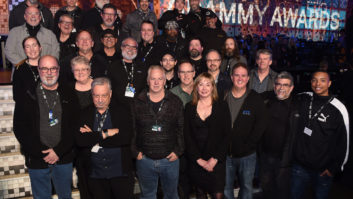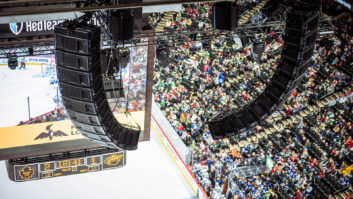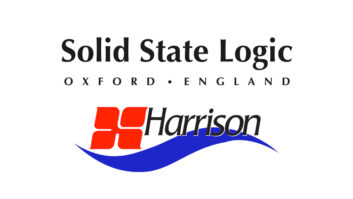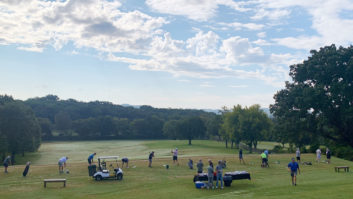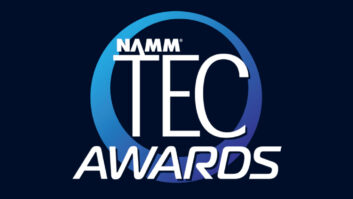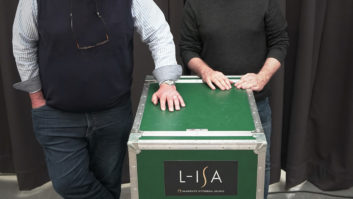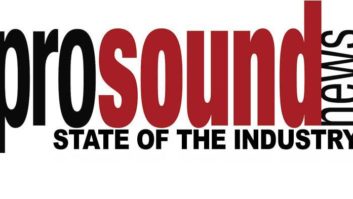While the nation’s ongoing economic recovery has been a difficult road, it has at least been steady so far, and the current state of the sound reinforcement industry finds live sound providers more positive this year as a result.
That the recovery has been long and slow isn’t disputed— according to Bloomberg, the economy has been expanding for nine straight quarters now, but since the recession’s official end in June 2009, it has only grown at an average rate of 2.1 percent, a full point below the 50-year average. Still, as the public has become more comfortable about the state of the economy, it has found itself increasingly ready to go have some fun—an attitude that has proven a boon for audio vendors at all levels, from those supporting national tours down to regional and local providers.
As evidence of that trend, Pollstar’s annual mid-year report found the Top 50 worldwide tours between January and June had sold nearly $1.85 billion in tickets, which made for a spectacular 23 percent jump over the same time period in 2012. Supporting that bounce was a 10.5 percent increase in ticket sales, hitting 21 million, and an 11.5 percent jump in the average ticket price, springing up $9.09 to a total of $88.03.
In the months since Pollstar’s report, the summer season—the highpoint of the touring year—was quite solid, with a healthy mix of perennial touring acts like The Dave Matthews Band and Rascal Flatts making the rounds, and more recent artists like Bruno Mars and Taylor Swift packing in the fans as well. While many summer seasons find one or two expensive, “must-see” productions—a U2 360 tour, for instance—taking most of consumers’ available ticket money out of the marketplace, this season didn’t have any single, expensive smash creating a vacuum, so tours generally sold more consistently, keeping tour sound providers on the national and regional levels busy.
Artists’ growing emphasis on touring isn’t too surprising. As the recording industry continues its slide, many music releases are now viewed as calling cards rather than money-making products themselves, released or given away with the expectation that they will fuel listeners’ interest in seeing an act live, spending money on tickets, merchandise and so forth.
The catch with this emerging music business model is that, as one national sound company executive put it, speaking on condition of anonymity, “they aren’t minting new superstars anymore. There will always be pop acts that can play arenas and bring in lots of money in the short term, but the support isn’t there to create major career artists that can play those places, too. It’s very short-sighted.”
More than that, it’s worrisome for the larger national audio companies that have spent years building their businesses on long-term relationships with artists and their teams, having also invested in the extensive gear to support those acts’ tours. As has been the case for decades, most of the top-grossing tours are still Baby Boomer favorites, and as they eventually leave life on the road in the next 10 years, it’s questionable if there will be many younger artists to fill their shoes—or in this case, arenas. So while the robust 2013 summer tour season has been good to the national audio providers, many of them see clouds on the horizon.
All of the things that have national- level sound providers concerned, however, have a far rosier glow for regional audio companies. The number of theater-level tours that are only carrying control gear from national providers, opting to pick up local stacks and racks, has only grown since the height of the recession, when artists and their managements learned to travel light. Similarly, the endless bumper crop of festivals has provided additional opportunities for the regional companies, tackling supplementary stages at the major events or the whole enchilada at smaller fests. All of this has kept regional providers busier, but the flipside is that they’ve needed to invest in increasingly up-to-date inventories to remain competitive.
If it all sounds increasingly positive, there’s statistics to back it up. InfoComm’s Economic Snapshot Survey, a bi-annual report that the organization kicked off in 2008 when the economy plummeted, regularly takes the temperature of the AV industry, including rental and staging companies, measuring not only their levels of recent performance but also gauging how they expect to do in the near future as well.
The latest edition, which came out in June, found the rental and staging market feeling pretty good about the state of things and certainly optimistic about the future. Gauging their previous six months’ business performance on a 100-point scale with endpoints of “bankruptcy” and “record growth and profits,” rental and staging companies gave themselves an average of 70.3, but placed the second half of 2013 as 74.3. Similarly, 66.5 percent of the rental and staging companies that were queried rated their previous six months overall as “strong” or “good,” while 72.9 percent expected the next six months to fit into those categories.
Perhaps the only drawback to the prevailing upbeat mood and the work that’s fueling it, is that newly bolstered regional providers may have to figure out where to go from here. Manny Martinez, general manager at AVS Production Group (Bronx, NY), noted that after investing in new equipment in recent years and taking on national tours with the likes of Marc Anthony, the company’s client base is changing: “Some events we used to do, they’re too little for us to take on now—we can’t afford to do them, because we have good equipment and good guys, and they cost good money.” The next step for AVS then, isn’t road-related. Having poured profits into taking over the entire building the company is based in, effectively doubling its size and adding a loading dock, AVS is now opening a soundstage large enough for a 36×24-foot stage and extensive trusses, taking its newfound space as an opportunity to diversify.
One aspect of the live sound landscape that’s benefitted audio providers large and small has been the rapid ascent of the music festival in North America. While the major U.S. festivals were few and far between just 10 years ago, today there’s upwards of 270 festivals in the United States, according to the Associated Press, with more popping up every month. They’ve proven an economic win-win for all involved, too—audiences get more bang (or bands) for their buck; production vendors get more work; and communities willing to host the events see a serious return on investment. Case in point: A 2011 report studying the economic impact of San Francisco’s Outside Lands festival found the event contributed more than $60 million annually to the local economy, while also creating the equivalent of 683 full-time positions in the area.
While few festivals have the profile of Outside Lands, the results are still indicative of the format’s success, and why, with the number of touring arena and stadium acts slowly dwindling, national audio providers are increasing the number of festivals they handle. Rat Sound (Camarillo, CA) has been the longtime touring audio provider for acts like Red Hot Chili Peppers and Blink-182, but it also tackles the Coachella and Stagecoach festivals in Indio, CA every year. Thunder Audio (Livonia, MI) may tour with Metallica and Steely Dan, but it also provided sound for different stages at seven different fests this year, including Bonnaroo, Electric Forest Rothbury, Lollapalooza and others. Eighth Day Sound (Highland Heights, OH) is on road with Taylor Swift, Jay-Z and others, but it also handles a substantial portion of Bonnaroo, as well as upstart festivals like Hangout Fest (Gulf Shore, AL) and Lock’n Fest in Arrington, VA. The list goes on.
Festivals have also created a foothold for a new national touring sound provider: VER Tour Sound. Its parent company—Video Equipment Rentals— is well established in the touring world, having made its name renting video walls, but the turn of the year saw it create the new touring sound company from the ground up—a sign of a recovering economy if there ever was one. Soon after, the parent company also purchased the inventory and some accounts of a bankrupt lighting provider, thus between sound, video and lights, expanding itself into a one-stop shop for productions.
Since getting its first tour out the door in January, VER Tour Sound has hit the road with the likes of Josh Groban, Brian Wilson/Jeff Beck, and OneRepublic, but along the way, festivals have become a key part of the audio vendor’s game plan.
“We’re mostly a touring company,” said project manager Mike Pirich, “but the festivals give us access to developing bands. Headlining bands have established relationships elsewhere, but there’s a whole generation of acts that are just hitting that level, and they’re playing these festivals.” So far, VER Tour Sound has worked on Essence Fest (New Orleans), Music Midtown (Atlanta, GA) and three stages at the EDM-focused Tomorrowworld (Chattahoochee Hills, GA). “Next, we have the Life is Beautiful Festival in Las Vegas at the end of October,” said Pirich, “with a lot of interesting bands that are just skyrocketing. It’s a great thing when acts are suddenly taking off as they have this year—to me, it shows the music industry is getting healthy when it allows room for that. It’s an exciting time to be in music!”
And the live sound business.
